Before embarking on my SAS journey I had no idea just how intense college courses would be. I am so grateful that I decided to do this program before entering my first year of college. It really provided me with an idea of what to expect in the fall.
Voyages
Spring 2022:
Mediterranean Exploration
Exploring countries in Europe, this voyage gives participants a truly impactful study abroad adventure on our floating college!
Explore, Learn, and Grow
Join Semester at Sea as we sail to countries in Europe. You’ll experience a wide range of cultures and histories, setting sail from Naples, Italy and disembarking in Bremerhaven, Germany — with a whole lot in between — all while living and learning aboard a ship you’ll call home, with a community that’s designed to build friendships for life.
Make the Voyage Your Own
With guided Field Programs and plenty of opportunities for in-country travel on your own or with fellow SAS voyagers, you’ll explore your interests and deepen your understanding of the world. Bring a sense of adventure and a willingness to discover the unknown.
- Naples, Italy
- Piraeus, Greece
- Limassol, Cyprus
- Dubrovnik, Croatia
- Valletta, Malta
- Barcelona, Spain
- Gibraltar, United Kingdom
- Lisbon, Portugal
- Brest, France
- Greenock, Scotland
- Copenhagen, Denmark
- Stockholm, Sweden
- Bremerhaven, Germany
-
1
Naples, Italy
Jan 05Italy has something for everyone, whether you are a history buff, outdoor adventurer, or an aspiring chef. If you are looking to explore ancient architecture, visit the Roman ruins or the renowned city of Pompeii, preserved by the volcanic ash of Mount Vesuvius. The five consecutive seaside towns of Cinque Terre offer beautiful hiking trails along the coastline and a chance to explore fishing villages. Culinary enthusiasts can learn how to cook in Naples, a city renowned for its Napoli-style pizza. Semester at Sea ports of call in Italy include Naples and Civitavecchia.
- capitol Rome
- language Italian
- religions Catholic Church
- government Republic, unitary state, parliamentary system, constitutional republic
- currency Euro
- population 59.6 million (2020)
-
2
Piraeus, Greece
Jan 12 – Jan 15With more ancient sites than any other country in Europe, Greece is an archaeological treasure. Philosophers and theologians have long been drawn here to explore the roots of modern thought. Even so, it is the vibrant blues and rugged beauty of the Greek Islands that beckon many visitors away from the crowds of Athens and the Acropolis. Santorini’s picturesque town of Oia is a whitewashed, blue-domed beauty. The sea-side cafes, windmills and nightlife of Mykonos are also draw for many of our participants. Sandy beaches can be found on Skiathos.
- capitol Athens
- language Greek
- religions Orthodox Christianity
- government Republic, Parliamentary system, Constitutional republic
- currency Euro
- population 10.72 million (2019)
-
3
Limassol, Cyprus
Jan 21 – Jan 24Known for having the cleanest beaches in Europe with year-round blue skies, Cyprus is an island in the eastern Mediterranean Sea renowned since ancient times for its mineral wealth, superb wines, and produce. Today, Cyprus is a popular tourist destination for visitors to experience the island’s laidback lifestyle and welcoming people. Semester at Sea ports of call in Cyprus include Limassol. Field Program options include creating clay art with a local potter as well as exploring ancient archaeological sites in Kourion. Highlights include exploring the Byzantine cultural heritage in the Troodos Mountain region.
- capitol Nicosia
- language Greek, Turkish
- religions Orthodox Christianity, Roman Catholicism
- government Unitary state, presidential system, constitutional republic
- currency Euro
- population 1.20 million (2021)
-
4
Dubrovnik, Croatia
Feb 01 – Feb 04Along the Adriatic Sea runs miles of Croatia’s strikingly beautiful landscape. This, along with 1,200 islands and 2,500 hours of sun a year, makes Croatia a perfect destination for exploring stunning nature. Many medieval towns are also to be found in abundance, making this nation a hallmark of the Mediterranean. Dubrovnik itself is an enchanting pedestrian city known for its intact city walls and towers, historic churches, and museums. Semester at Sea ports of call in Croatia include Dubrovnik. Field Program options include exploring ancient cities and joining a countryside cooking class. Highlights include swimming in clear waters and observing the abundant marine life, which makes snorkeling a popular activity.
- capitol Zagreb
- language Croatian
- religions Roman Catholicism, Orthodox Christianity
- government Parliamentary republic
- currency Kuna
- population 4.047 million (2020)
-
5
Valletta, Malta
Feb 08 – Feb 11Malta is an island country located in the central Mediterranean Sea. The country comprises five islands—Malta (the largest), Gozo, Comino, and the uninhabited islets of Kemmunett (Comminotto) and Filfla—lying some 58 miles (93 km) south of Sicily, 180 miles (290 km) north of Libya, and about 180 miles (290 km) east of Tunisia, at the eastern end of the constricted portion of the Mediterranean Sea separating Italy from the African coast.
- capitol Valletta
- language Maltese, English
- religions Roman Catholicism
- government Unitary Multiparty Republic
- currency Euro
- population 502,653 (2019)
-
6
Barcelona, Spain
Feb 17 – Feb 24Spain’s diverse landscape, architecture, art, and cuisine make the country rich in culture and charm. Semester at Sea ports of call in Spain include Barcelona, Valencia, and La Coruna. Field Program options include explorations of the art, culture, and architecture of the two diverse regions. Highlights include overnight trips to Sevilla, Granada, and Madrid, with opportunities to explore the cathedrals, gardens, palaces, and other cultural sites that reflect Spain’s Moorish and Islamic heritage.
- capitol Madrid
- language Castillian Spanish, Catalan, Galician, Basque, Aranese
- religions Catholicism
- government Monarchy, unitary state, parliamentary system, constitutional monarchy
- currency Euro
- population 47.35 million (2020)
-
7
Gibraltar, United Kingdom
Feb 28 – Feb 28Gibraltar, a unique and captivating British Overseas Territory located at the southern tip of the Iberian Peninsula, offers a rich blend of culture, a resilient and diverse population, and a wealth of activities to explore. The culture of Gibraltar is a fascinating fusion of British and Spanish influences, shaped by its strategic location. The Gibraltarians, a warm and friendly community, reflect this mix in their customs and traditions. The community is known for its enduring British identity, with a strong attachment to the iconic Rock of Gibraltar, a symbol of national pride.
Visitors to Gibraltar can revel in a range of experiences. The most prominent attraction is the Rock of Gibraltar, offering breathtaking views and housing the famous Barbary macaques. The city is replete with history, featuring historic sites such as St. Michael’s Cave and the Great Siege Tunnels. Gibraltar’s Mediterranean climate makes it an ideal destination for beach lovers, while the charming streets of Main Street beckon shoppers and food enthusiasts with a variety of cuisines, from traditional British fare to Spanish tapas.
- capitol Gibraltar
- language English
- religions Roman Catholicism
- government Parliamentary system, constitutional monarchy
- currency Gibraltar pound
- population 33,691 (2020)
-
8
Lisbon, Portugal
Mar 05 – Mar 10Emerging as one of Europe’s unsung destinations, Portugal is an energetic and vibrant country with a centuries-long history. Semester at Sea ports of call in Portugal include Lisbon and Oporto. Field Program options include exploring the city by Tuk Tuk along with taking in Lisbon’s street art. Highlights include taking a Portuguese cooking class or embarking on an overnight trip to southern Portugal where you can kayak along natural waterways.
- capitol Lisbon
- language Portuguese
- religions Roman Catholicism
- government Republic, unitary state, parliamentary system, democratic republic
- currency Euro
- population 10.31 million (2020)
-
9
Brest, France
Mar 16 – Mar 19Be enticed by some of the most iconic landmarks, world-class art, and architecture that France has to offer. Explore the stunning countryside by tasting locally produced cheese and wine, or venture into the city and come face-to-face with a staggering amount of history. Semester at Sea ports of call in France include Le Havre and Brest. Field Program options include an overnight trip exploring the historic sites of Normandy or seeing the natural beauty of France, such as the sandy beaches of Perros. Highlights include taking an overnight journey to Paris and experiencing all the famous sites this city has to offer.
- capitol Paris
- language French
- religions Christianity (Roman Catholic)
- government Unitary state, semi-presidential system, constitutional republic
- currency Euro
- population 67.39 million (2020)
-
10
Greenock, Scotland
Mar 23 – Mar 26Scotland, with its dramatic landscapes, rolling countryside, bustling cities, and charming villages, provides visitors with an excellent holiday destination. Many note Scotland as a magical place with its countless castles found throughout the country making visitors as if they are in a fairytale. Semester at Sea ports of call in Scotland include Greenock. Highlights include exploring Craigievar Castle, the inspiration for Walt Disney’s Cinderella castle, or taking a ghost tour in Europe’s reportedly most haunted city, Edinburgh.
- capitol Edinburgh
- language Scottish Gaelic, English
- religions Roman Catholic
- government Devolution, constitutional monarchy
- currency Pound sterling
- population 5.45 million (2019)
-
11
Copenhagen, Denmark
Apr 02 – Apr 06Although small in size, Denmark has much to offer. Soak in Danish culture by visiting highlights such as the Tivoli, the Little Mermaid, and more. Explore everything this country has to offer and see for yourself why Denmark has been named one of the happiest countries in the world. Take a walking tour through the capital city of Copenhagen and experience the tranquil and peaceful atmosphere that makes this country so special. From Nordic cuisine to beautiful architecture, you’ll be transported to a place that truly encompasses hygge, or a sense of comfort, a term the Danish made world-famous. Semester at Sea ports of call in Denmark include Copenhagen.
- capitol Copenhagen
- language Danish
- religions Evangelical Lutheran
- government Parliamentary Democracy
- currency Danish krone
- population 8.831 million (2020)
-
12
Stockholm, Sweden
Apr 10 – Apr 13Sweden offers much green space with dense forests, dramatic mountains, and breathtaking coastlines. Swedish art, poetry, literature, music, textiles, dance, and design are deeply infused within the Nordic landscape and climate. Semester at Sea ports of call in Sweden include Stockholm. Highlights include exploring Stockholm’s old town or countless museums — or staying overnight in an ice hotel.
- capitol Stockholm
- language Swedish
- religions Church of Sweden, unaffiliated
- government Parliamentary system, unitary state, hereditary monarchy, representative democracy, constitutional monarchy
- currency Swedish krona
- population 10.35 million (2020)
-
13
Bremerhaven, Germany
Apr 20Germany is a must-see destination for its combination of old-world charm and modern urban cities. From beautiful scenery and great architecture to lively festivals, exciting nightlife, and delicious cuisine, Germany offers it all. Semester at Sea ports of call in Germany include Bremerhaven. Highlights include overnight trips to Berlin, an ideal place to experience a buzzing European metropolis with a rich history.
- capitol Berlin
- language German
- religions Roman Catholic, Protestant
- government Federal republic, representative democracy, Parliamentary republic, constitutional republic
- currency Euro
- population 83.24 million (2020)
Diversion Ports
As we have been operating shipboard voyages since 1963, we’ve learned that itineraries are subject to adjustment. More than half of our voyages have required some deviation from the planned itinerary. The need to change an itinerary prior to and/or during a voyage can arise due to a number of factors: weather, political unrest, and other health and safety considerations. Should there be a need to adjust our published plans, we have identified potential Diversion Ports in each region of our expected travel. These ports are selected based on a number of factors including safety, educational value, and accessibility. These Diversion Ports simply serve as a backup should anything prevent us from traveling to our planned itinerary.
Other ports may be added as required. Just as our world is dynamic, this list of potential ports is also subject to change. Every destination must pass a comprehensive health and safety assessment, regardless of being a planned or Diversion Port.
Spring 2022 Diversion Ports
- Palermo, Italy
- Marseille, France
- Civitavecchia, Italy
- Valencia, Spain
- Cadiz, Spain
- Funchal, Madeira, Portugal
- Southampton, England
- Amsterdam, Netherlands
- Hamburg, Germany
- Edinburgh, Scotland
- Copenhagen, Denmark
- Tallinn, Estonia
Voyage Curriculum
The Perfect Mix of Classroom and Field Education
Semester at Sea’s global comparative study abroad program is enhanced by a robust academic program led by a team of academic experts from renowned institutions around the world. During the 100+ day voyage, students can earn 12-15 credits from Colorado State University while taking major or elective courses, drawn for 20-25 fields of study. Each class also includes academically required Field Work courses, which are developed by faculty and allow for experiential in-country learning throughout the voyage.
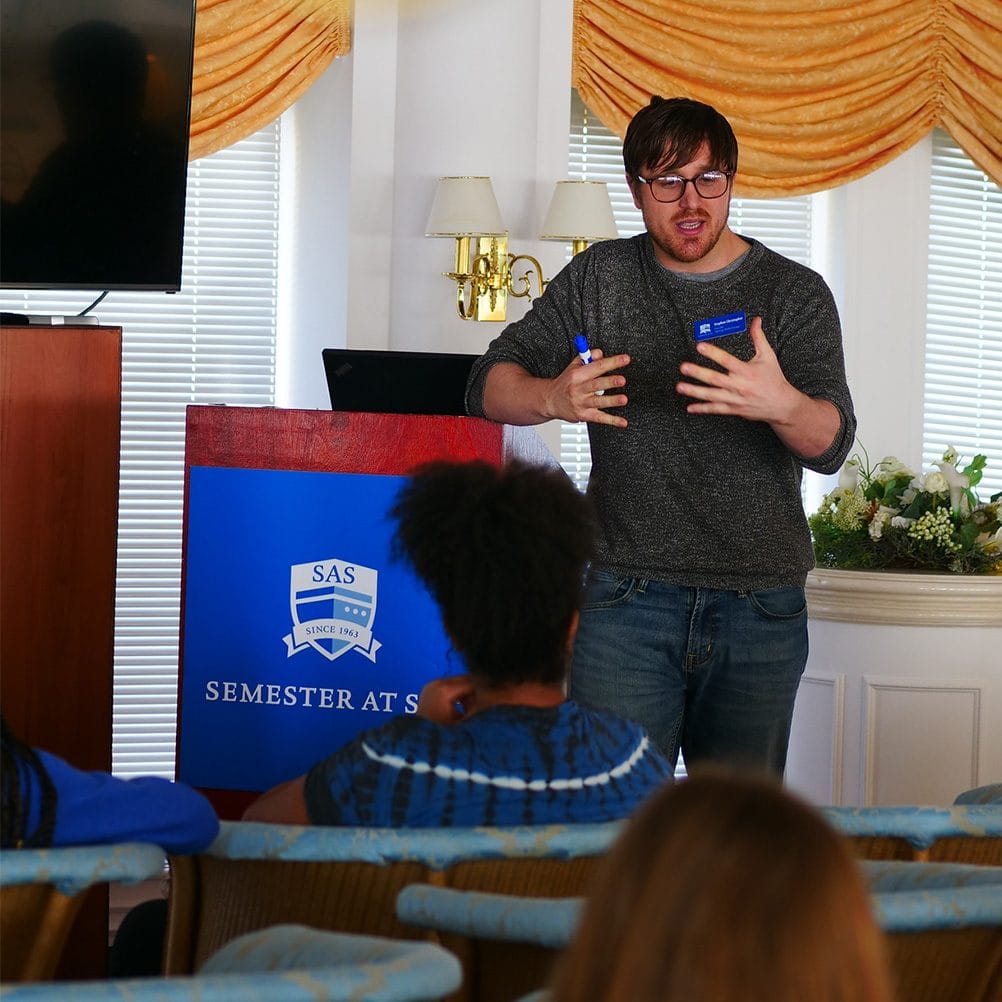
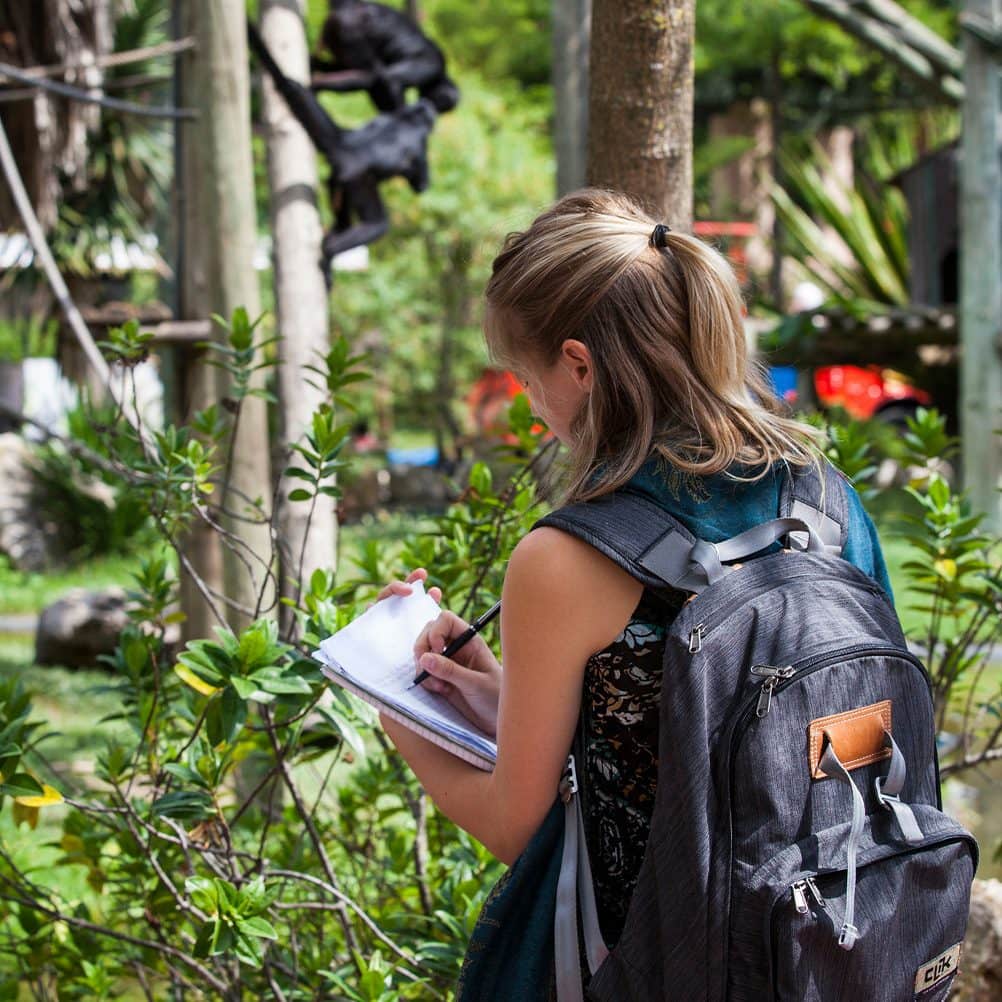
Field Programs
Semester at Sea Field Programs
When Semester at Sea arrives in each country, voyagers will either explore via required Field Work for their classes (for voyagers enrolled in academic courses), participate in optional Semester at Sea-designed Field Programs, or they can plan their own travel experiences.
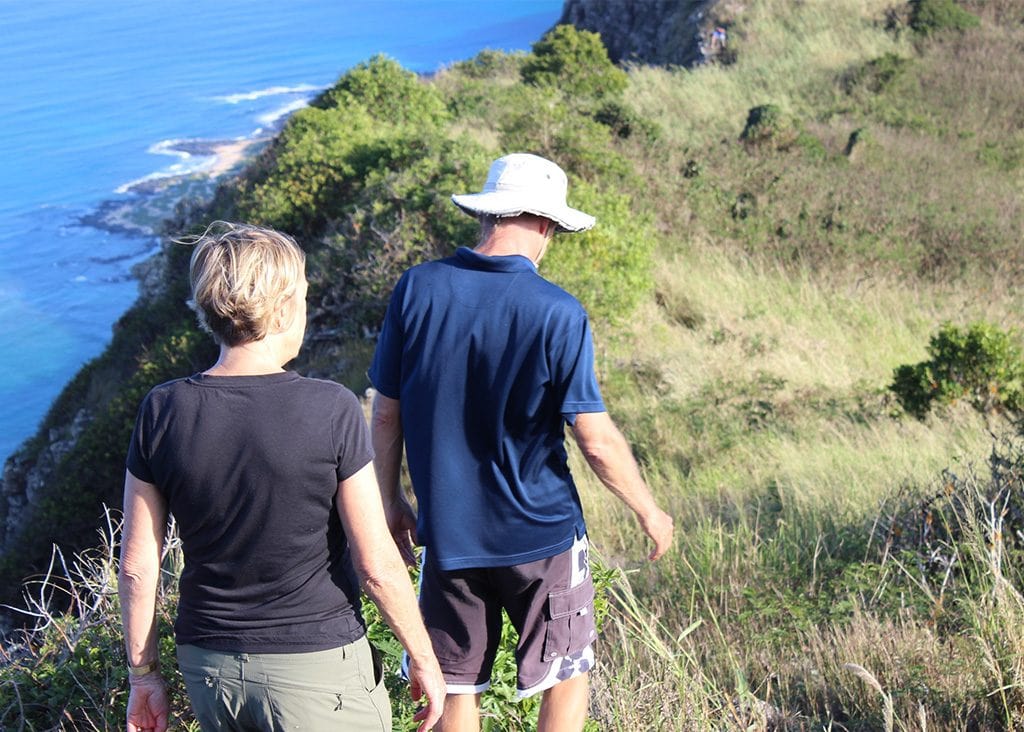
Looking to Sail as a Lifelong Learner?
Semester at Sea’s Lifelong Learning Program provides adult educational travel to people at least 30 years of age, seeking an opportunity to travel and learn as part of the Semester at Sea community. There are opportunities to sail on a full or partial (Spotlight) voyage.
Program Fees Overview
A Study Abroad Experience Is a Significant Investment — and Also One of the Best Investments for a Student’s Future.
In addition to earning 12-15 transferable college credits from Colorado State University, student program fees include many amenities and benefits to support students before and during their study abroad experience.
A look into what’s included:
- Semester’s tuition and travel
- Housing, meals, and amenities
- Academic Field Classes
- Email account
- Starter Internet package
- Comprehensive travel health insurance
- Pre-voyage advisement and on-site residential student services staff
- Fuel fee — subject to change depending on global cost fluctuations

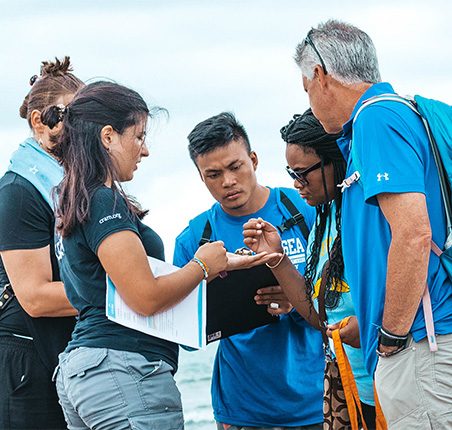
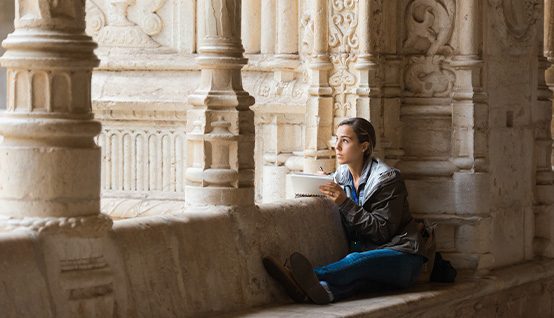
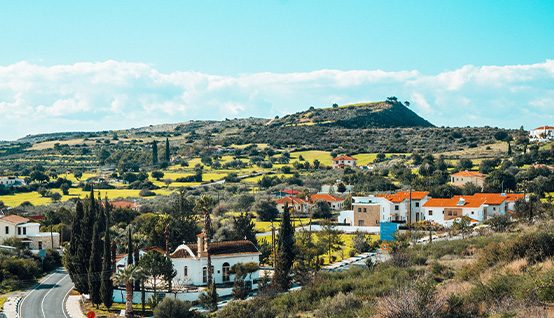
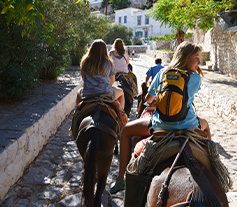
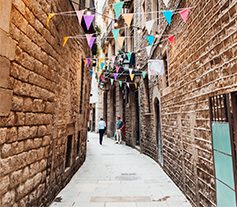
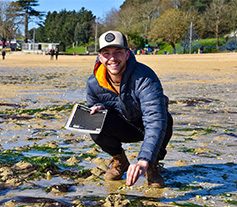
Hear From Past Voyagers
Admissions
Semester at Sea welcomes curious, engaged students of any sex, gender identity, race, disability status, veteran status, nationality, or ethnicity to apply to travel the world as part of our living and learning community.
Frequenty Asked Questions
Everything you need to know about joining a Semester at Sea voyage.
Yes. However, some staff positions require the individual remain within a certain proximity of the ship for a portion of time. This individual shares in a rotating duty schedule and is available to the shipboard community in cases of emergency. Faculty members lead in-country field work for each course taught. When scheduled for such field work, faculty are not able to undertake personal travel. Otherwise, personal travel is permitted.
We welcome trip participants over 10 years of age to join us. While there is no maximum age, all participants must be physically fit, active, and in good health. Certain itineraries are better suited for families, and we encourage you to reach out to a Semester at Sea staff member to inquire about your own personal needs. Please refer to the program brochure for trip-specific requirements.
Any condition that requires special medical attention or assistance must be reported at the time a reservation is made. The individual trip brochures will provide specific details on the rigors of individual trips. If you have concerns about your ability to participate, please feel free to call us.
At this time, we offer a Loyalty Award to alumni (of any kind) who are sailing a full voyage as a Lifelong Learner. Read more.
Through our contract with CISI (Cultural Insurance Services International), Semester at Sea receives medical capability briefings for each country prior to arrival from AXA Assistance. These briefings provide lists of preferred medical facilities that indicate they have been vetted by their local representatives to provide quality and reliable care. These preferred facilities also have an established direct-bill arrangement with AXA to assist with prompt care and logistical response.
In the event that on-site medical care does not meet the needs of an individual (related to COVID-19 or otherwise), AXA would coordinate a transfer to another facility that can meet the needs.
We do not offer payment plans for the Parent and Family Trips at this time. Full payment is required upon registering for the trip. You may use a credit card or mail a check (specific payment details are listed in each trip).


